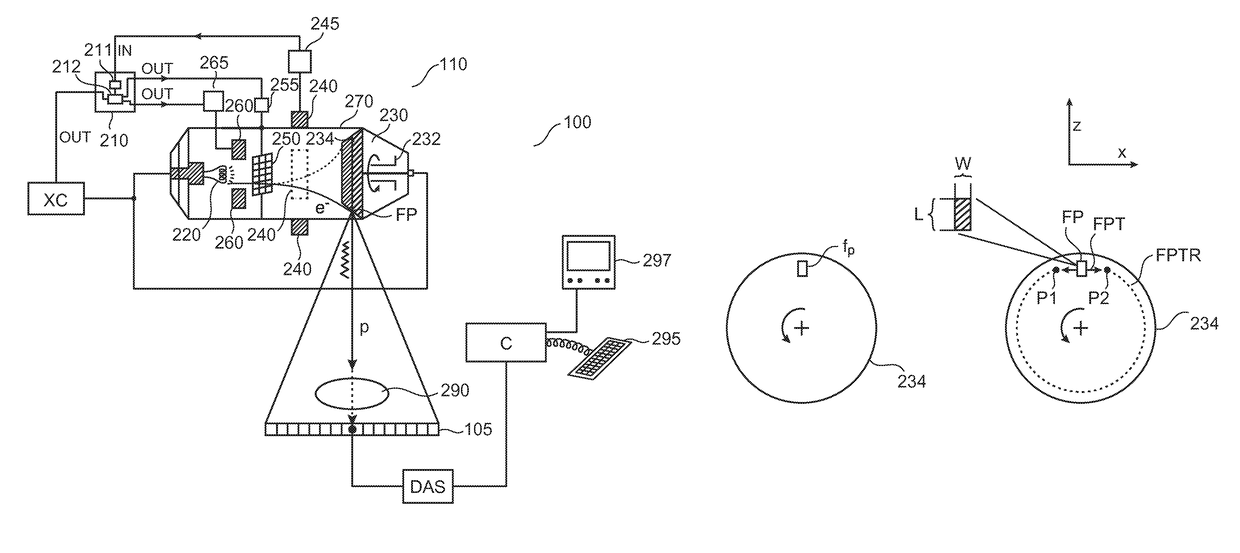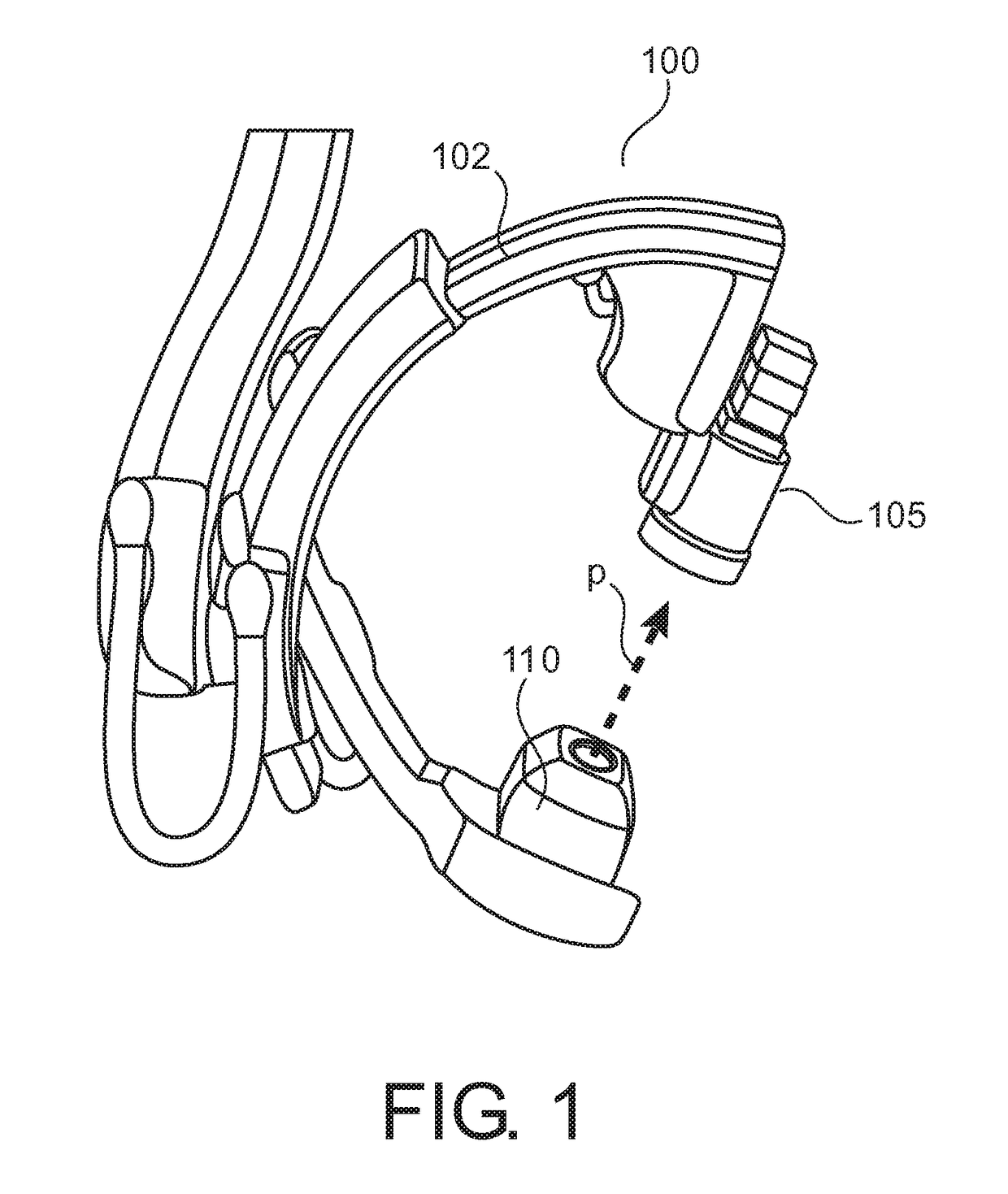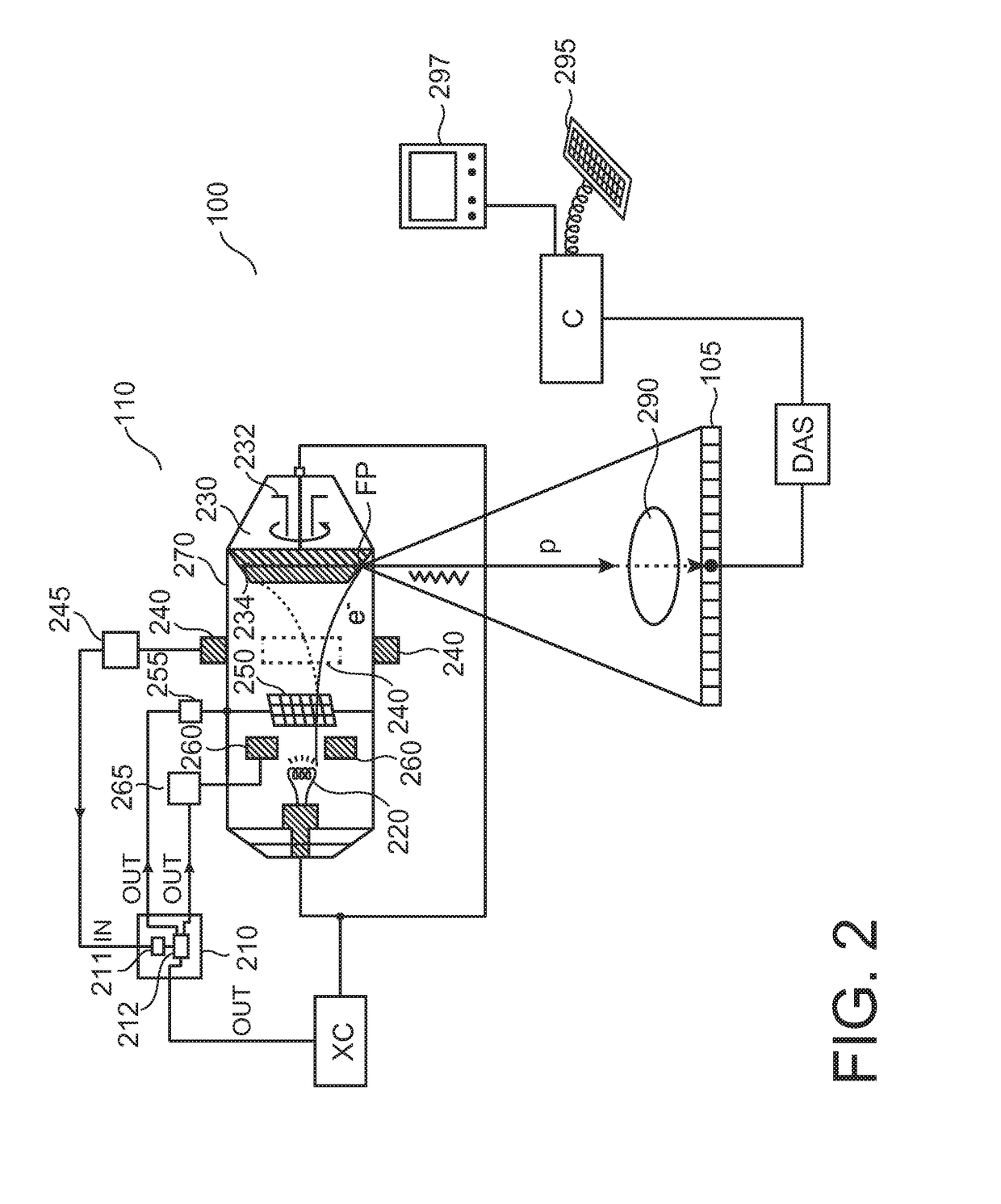Blanking of electron beam during dynamic focal spot jumping in circumferential direction of a rotating anode disk of an X-ray tube
a technology of rotating anode disk and electron beam, which is applied in the direction of x-ray tubes, material analysis using wave/particle radiation, instruments, etc., can solve the problem that imagers require frequent maintenance, and achieve the effect of more efficient us
- Summary
- Abstract
- Description
- Claims
- Application Information
AI Technical Summary
Benefits of technology
Problems solved by technology
Method used
Image
Examples
Embodiment Construction
[0035]With reference to FIG. 1 there is shown an x-ray imager having a rigid gantry 102 to which are attached in opposing relationship an x-ray sensor 105 and an x-ray tube 110. FIG. 1 shows x-ray tube 110 and detector 105 in their respective outer housings or shells. X-ray 110 projects a beam of x-rays p towards detector 105. In FIG. 1 the imager is of a “C-arm” type but it is understood that the following is equally applicable to other x-ray imagers having different constructions.
[0036]FIG. 2 shows in more detail certain components of the x-ray imager 100 in FIG. 1 in particular x-ray tube 110. X-ray tube 110 is arranged to emit x-ray p which are attenuated by tissue of an object 290 for example a patient undergoing examination whilst residing on an examination table interposed between X-ray tube 110 and detector 105. The attenuated x-ray (shown in FIG. 2 in dashed lines) interacts with detector cells of detector 105. The interaction is translated into digital signals by a data ac...
PUM
| Property | Measurement | Unit |
|---|---|---|
| melting temperature | aaaaa | aaaaa |
| residence time | aaaaa | aaaaa |
| residence time | aaaaa | aaaaa |
Abstract
Description
Claims
Application Information
 Login to View More
Login to View More - R&D
- Intellectual Property
- Life Sciences
- Materials
- Tech Scout
- Unparalleled Data Quality
- Higher Quality Content
- 60% Fewer Hallucinations
Browse by: Latest US Patents, China's latest patents, Technical Efficacy Thesaurus, Application Domain, Technology Topic, Popular Technical Reports.
© 2025 PatSnap. All rights reserved.Legal|Privacy policy|Modern Slavery Act Transparency Statement|Sitemap|About US| Contact US: help@patsnap.com



